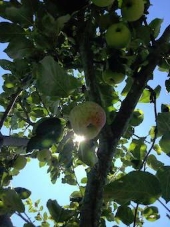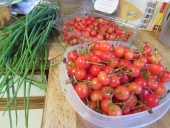posted 7 years ago
Hello Dee!
I personally wouldn't worry about your trees, and hears why. First off, even self polinating trees can benefit from an addition compatible polinator. With that said, your questions could have a number of any different answers, or a combination of them depending on the exact circumstances.
With limited flowers on any given tree, that limits the oppertunity for pollen to successfully polinate the flowers. Pollen has to still get from the male part which produced the pollen, to the female part where fertilization takes place, and that fertilization needs to be adequate enough to triger fruit development. Maybe the trees at the nursery had more compatible pollen available, more pollinators, less stress, more compatible soil and or nutrition. (Professional growers know what soil and nutrients work, plus they typically water with a timer. Even one missed watering, or the soil getting to dry for the recently bare rooted tree, can cause enough stress for blossom drop at any stage in flowering.) Any number of factors or combination of factors could contribute to no fruit production on given trees, in a given area, or a given season. Other factors either way could be: trees were under some type of stress like transplant stress or dehydration from limited root development or water access; temperatures not inducive to polinators, polination or even inadequate polination from any number of sources like untimely weather or rain. Soil type, nutrition, pH, water availability, microclimates, surrounding habitat, the type of root treatments or soil treatments done by the grower on their trees, and even spacific location can have varying environments and effects on environment that also effect successful pollination and fruit development.
So without details in every relevant factor for scientific comparison between your trees and the nursery trees, and I mean even factors that are seemingly miniscule, unnoticed and insignificant to the layperson. Even a certified arborist specializing in fruit trees, could only make statistically improbably guesses as to whats happening, and thats actually the worst possible thing to do. Guessing whats wrong with living organisms, is like taking your car to the mechanic, and saying I think something may be wrong, and without any proper testing, they just guess and start replacing parts, untill they by chance replace the right one...lol. Only with plants/trees those wrong guesses dont just coast money, they typically cause increasing stress to the plants. It's essentially how people love their plants to death.
There are to many factors, and not enough information to quantify any conclusive answer besides speculation of probabilities. If your problems persist next year, that would be a good time to look at adequate pollinaton, and solutions. This year I would focus on healthy soil and soil biome, adequate nutrition and water for maximizing health and growth; then if you don't get pollination next year, you'll be able to quickly figure out if it was weather related, lack of pollinators or lack of compatible pollen. Once you know the exact problem, you can easily and efficiently solve the problem. I personally would match even a self fertile tree, with another flower cycle and pollen compatible tree, which also produces a desirable fruit, since fruit sets are documented to be better under those conditions.
Hope that helps!










